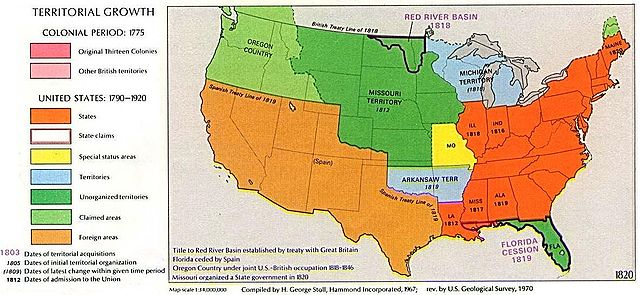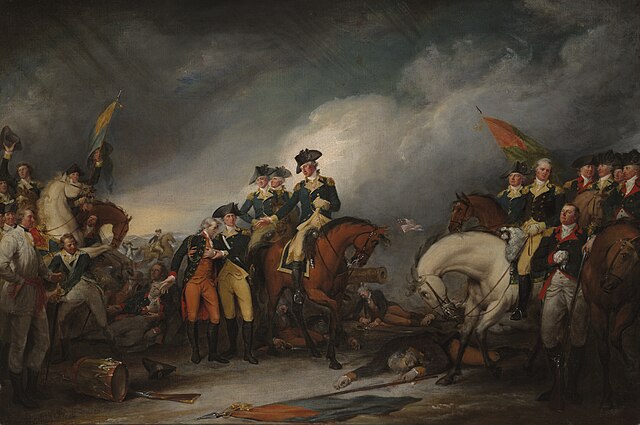Presidency of James Monroe
The presidency of James Monroe began on March 4, 1817, when James Monroe was inaugurated as President of the United States, and ended on March 4, 1825. Monroe, the fifth United States president, took office after winning the 1816 presidential election by an overwhelming margin over Federalist Rufus King. This election was the last in which the Federalists fielded a presidential candidate, and Monroe was unopposed in the 1820 presidential election. A member of the Democratic-Republican Party, Monroe was succeeded by his Secretary of State John Quincy Adams.
Presidency of James Monroe
Monroe presiding over a cabinet meeting in 1823.
Independence Day Celebration in Centre Square (1819) by John Lewis Kimmel exemplifies the spirit of the "Era of Good Feelings"
The Missouri Compromise prohibited slavery in the unorganized territory of the Great Plains (upper dark green), but permitted it in Missouri (yellow) and the Arkansas Territory (lower blue area).
James Monroe was an American statesman, lawyer, diplomat, and Founding Father who served as the fifth president of the United States from 1817 to 1825, a member of the Democratic-Republican Party. He was the last Founding Father to serve as president as well as the last president of the Virginia dynasty. His presidency coincided with the Era of Good Feelings, concluding the First Party System era of American politics. He issued the Monroe Doctrine, a policy of limiting European colonialism in the Americas. Monroe previously served as governor of Virginia, a member of the United States Senate, U.S. ambassador to France and Britain, the seventh secretary of state, and the eighth secretary of war.
Portrait by Samuel Morse c. 1819
Marker designating the site of James Monroe's birthplace in Monroe Hall, Virginia
The Capture of the Hessians at Trenton, December 26, 1776, by John Trumbull, showing Captain William Washington, with a wounded hand, on the right and Lt. Monroe, severely wounded and helped by Dr. John Riker, left of center, behind the mortally wounded Hessian Colonel Johann Gottlieb Rall. Rall is being helped by American Major William Stephens Smith
Elizabeth Kortright








